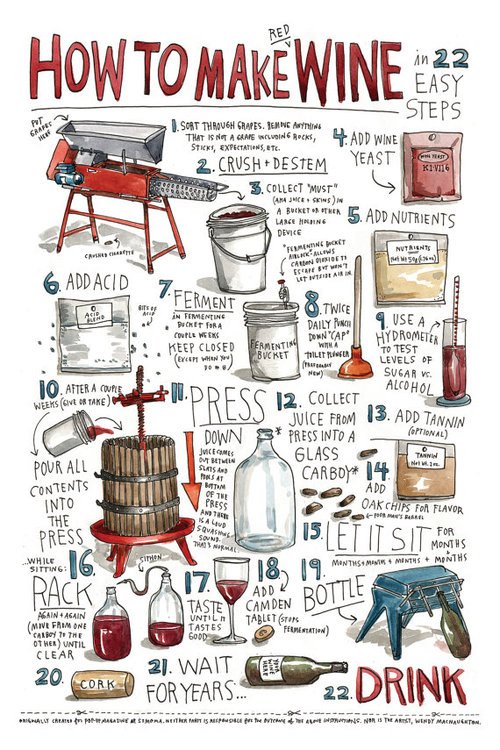06
Weirdness at the Wine Advocate
Posted by | Posted in Commentary | Posted on 03-06-2014
 Early this morning, Robert Parker took a break from several weeks of traveling to post an update for his readers.
Early this morning, Robert Parker took a break from several weeks of traveling to post an update for his readers.
In a brief blurb about the Wine Writers Symposium, he wrote, “…Lisa and Jeb were there and later told me the tasting of Jon Bonné’s “new California” wines, assisted by Eric Asimov, was a disaster of showcasing largely emaciated, excessively acidic, hollow wines –apparently many of the attendees were turned off, wondering how wine writing could intentionally go down such a losing path.”
As readers asked for clarification, Wine Advocate editor Lisa Perrotti-Brown MW shared some quick notes:
Here are the wines as I recall them off the top of my head (forgive me if I get some of the wine details wrong): Chappellet 2012 Chenin Blanc (dilute, lacking perfume, simple, thin and abrubt); Abrente 2012 Carneros Albariño (neutral aroma, flavorless without vibrancy and texture…I wondered if they had actually planted Albariño); Massican 2012 White Wine Blend (a blend of mainly Ribolla Gialla with smaller proportions of Tocai Friuliano & Chardonnay. It was vaguely interesting for uniqueness-sake but not particularly exciting as a wine…fairly simple, tart and nondescript); a Pinot Grigio (can’t remember the name) with some residual sugar to give it texture and the illusion of fruit flavor…enough said.; Heitz Grignolino (this was touted as a red wine but looked like a rose and tasted something like an average quality Gamay); a really disappointing Cabernet Franc (again, I’ve forgotten the producer but I was truly disappointed with this austere, astringent, weedy example because I know Napa can produce great Cab Franc when it’s matched to a compatible site), Lagier Meredith 2011 Syrah (The wine of the tasting for me – a pleasant, cooler vintage style with a medium body and plenty of pepper and spice.) I seem to remember we finished with an under-ripe, hollow, hard, acidic and forgettable Cabernet Sauvignon that wasn’t even close to Napa greatness standards.
The actual lineup was as follows:
– 2012 Abrente Albariño
– 2012 Chappellet Chenin Blanc
– 2012 Massican Annia (46% Ribolla Gialla, 36% Friulano, 18% Chardonnay)
– 2011 Matthiasson White (56% Sauv Blanc, 20% Ribolla Gialla, 18% Semillon, and 8% Friulano)
– 2009 Heitz Grignolino
– 2011 Lagier Meredith Syrah
– 2011 Turley Wine Cellars Library Vineyard Petite Sirah
– 2010 Corison Cabernet Sauvignon
Jeb Dunnuck, who reviews wines from the Rhône Valley, Southern France, Washington, and Central & Southern California for Wine Advocate, also chimed in:
The whites were mediocre at best. Most were tart, hollow and under-ripe; one needed RS to keep it palatable. Eric Asimov even commented that one was not profound and quaffable… Nothing wrong with that, but the idea that that’s what Napa should strive towards is ridiculous. Reds were better (one weird, odd ball blend was a no go), with the 2011 Lagier Meredith Syrah showing well, but it’s far from their best vintage. Disappointing as a whole and I can’t imagine anyone left there thinking this is the direction Napa should be going.
I’m not sure where Perrotti-Brown had a Cabernet Franc or Pinot Grigio, but it wasn’t in that room. And I’m shocked that Dunnuck found the “weird, odd ball blend” so disappointing – it received a score of 94-96 in the May 2013 edition of the Wine Advocate.
I’d bet the bank that most attendees felt it was one of the strongest panels of the week. It was certainly where we had the most interesting wines. And the discussion was fantastic. Jon and Eric talked at length about the history of the California wine industry – walking attendees through where California’s been, where it is, and where they think it’s going.

 (Editor’s note: Last week, Robert Parker spoke to attendees at the annual
(Editor’s note: Last week, Robert Parker spoke to attendees at the annual 

 Everywhere I go, people are suggesting thoughtful wine and food pairings. But I’m rarely impressed.
Everywhere I go, people are suggesting thoughtful wine and food pairings. But I’m rarely impressed. As readers who follow me on
As readers who follow me on  Today, the wine world
Today, the wine world 
 Earlier this week, Steve Heimoff wrote
Earlier this week, Steve Heimoff wrote 





